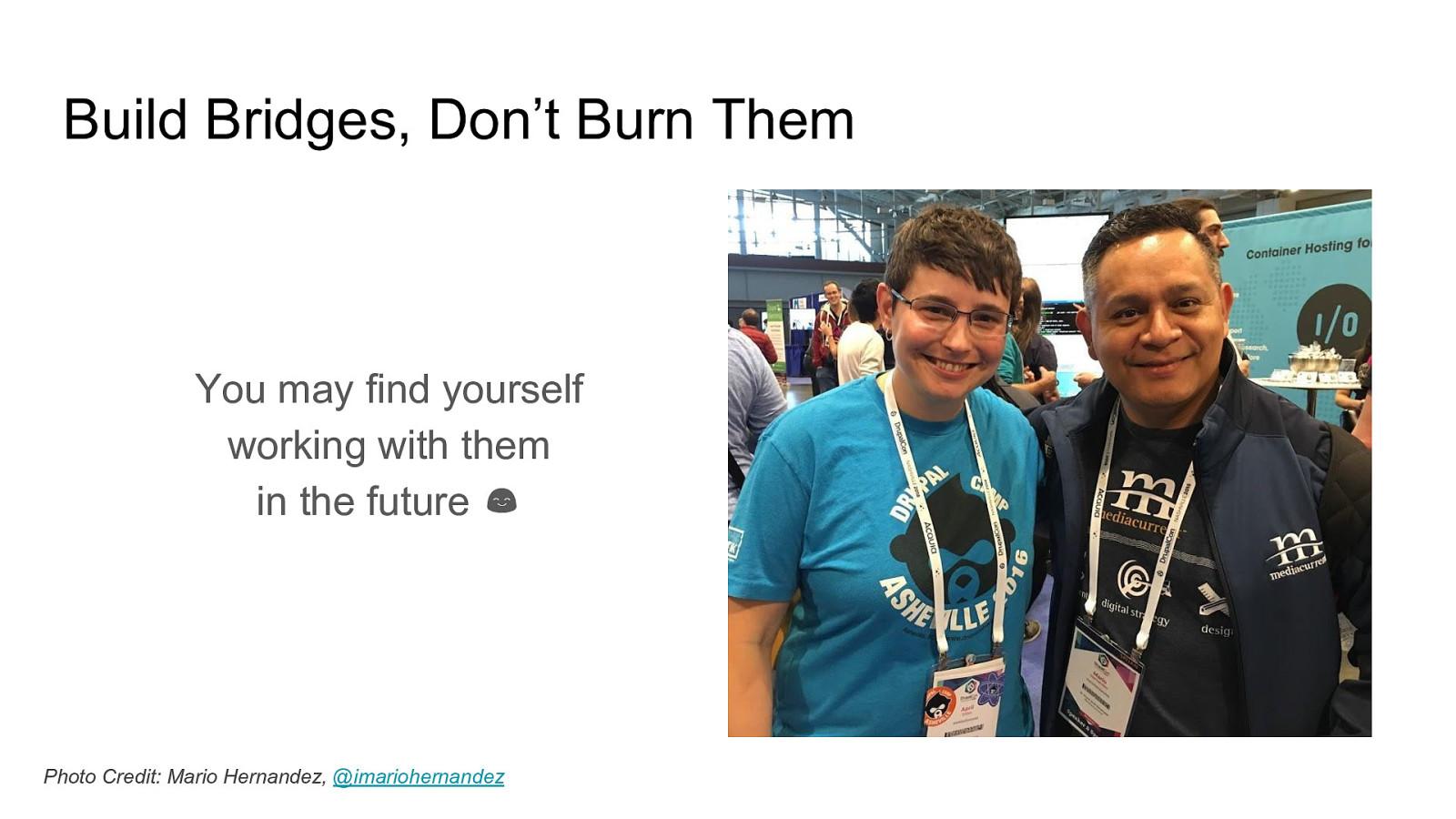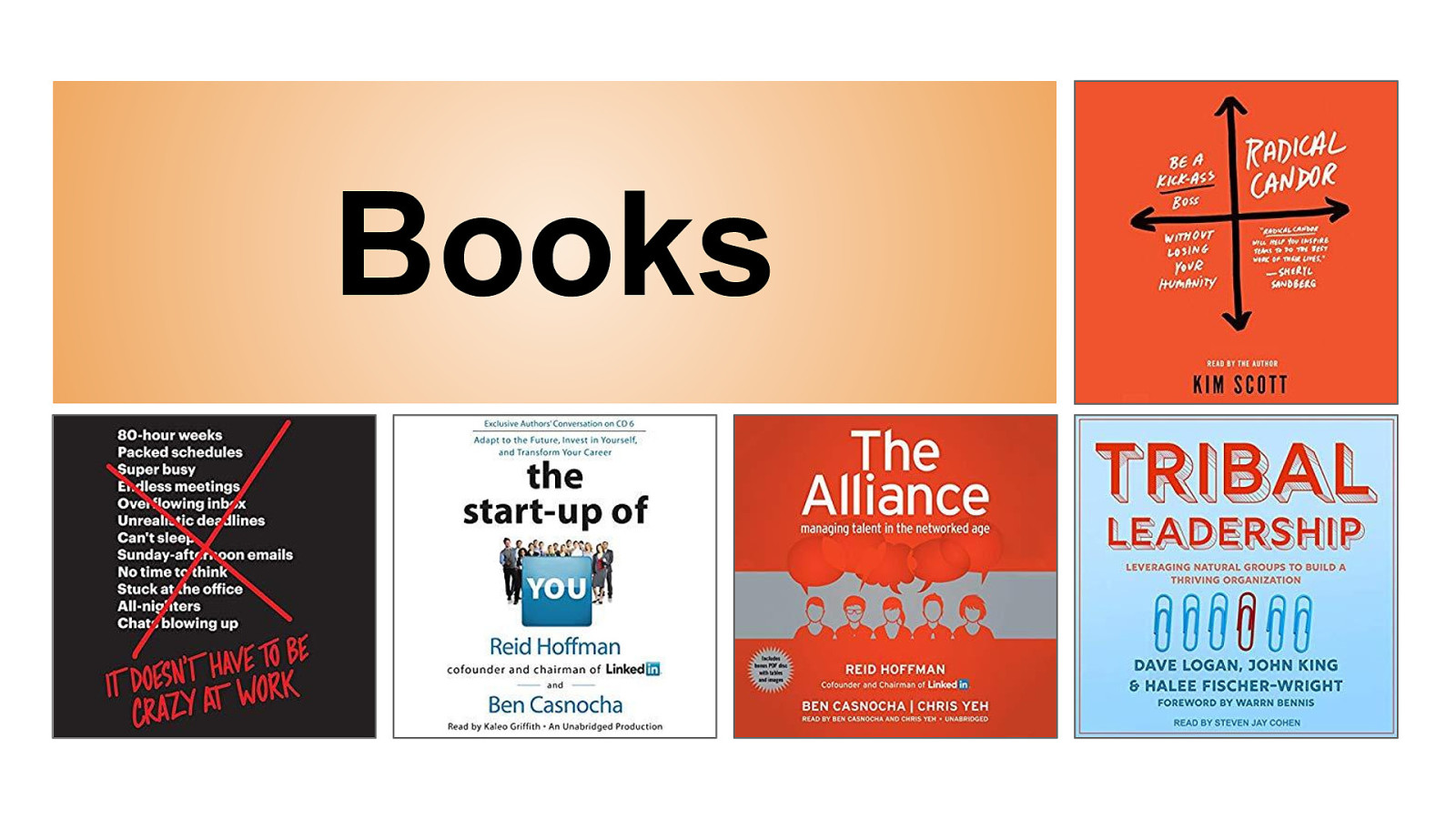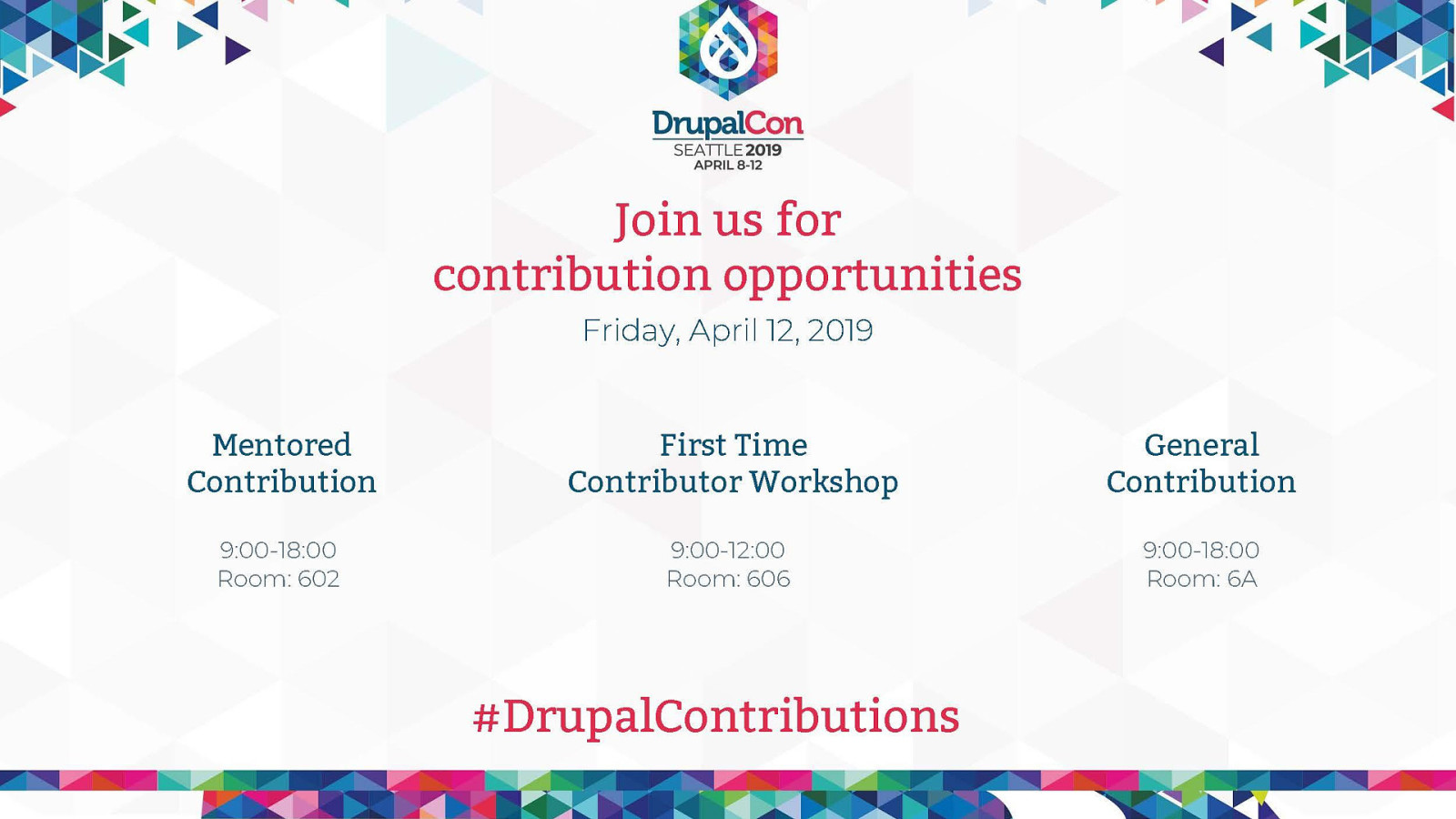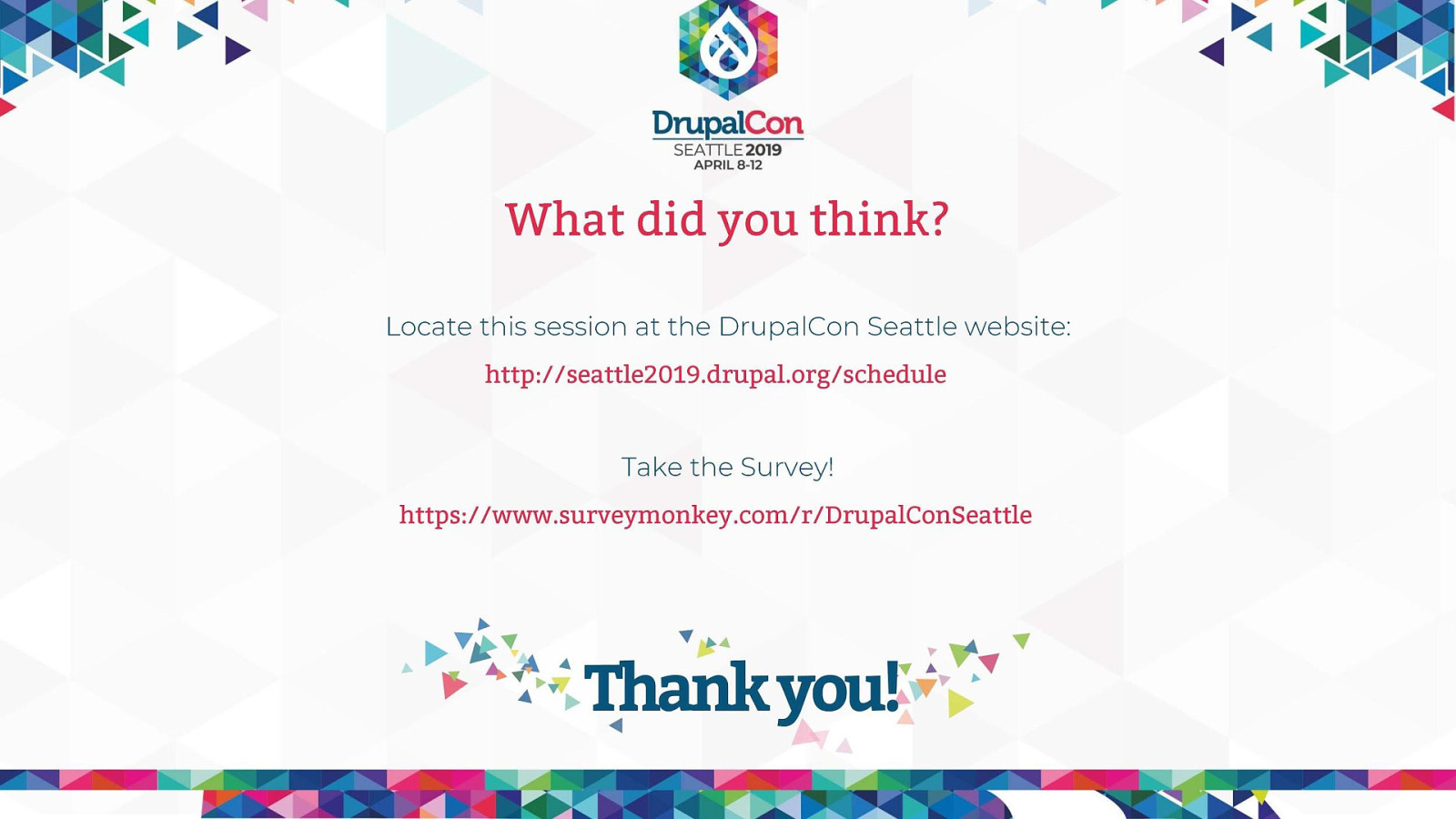How to Hire and Fire Your Employer April Sides Icon Credit: Work by Alina Oleynik from the Noun Project
A presentation at DrupalCon Seattle in April 2019 in Seattle, WA, USA by April Sides

How to Hire and Fire Your Employer April Sides Icon Credit: Work by Alina Oleynik from the Noun Project

April Sides Developer at Lullabot Director of Drupal Camp Asheville weekbeforenext weekbeforenext aprilsides

My Background Icon Credit: Road Location by Creative Stall from the Noun Project

Data Source: LinkedIn https://www.linkedin.com/in/aprilsides

Why Care Icon Credit: Heart by ProSymbols from the Noun Project

Data Source: U.S. Bureau of Labor Statistics “American Time Use Survey” https://www.bls.gov/charts/american-time-use/activity-by-age.htm

Over ⅓ of our awake time is spent in work and work related activities

#yolo Photo Source: http://www.photobackgroundhd.com/catalog/drake-wallpapers

1 What do you have, want and need? 2 Should I stay or should I go? 3 How do you find the right employer? 4 How do you fire your current employer?

What do you have, want, and need? Icon Credit: process by Marek Polakovic from the Noun Project

Assets Icon Credit: Package by Gregor Cresnar from the Noun Project

Soft Assets Hard Assets

Personal Values Icon Credit: Value by nauraicon from the Noun Project

Personal Values Are Found In Your Past Think about the big transformative moments from your life. ● What values were present in those stories? Name 5 of those values that you can’t live without. Resource: Culture Sync, https://culturesync.net/tools/mountains-and-valleys Photo Source: Gaetan THURIN from Pexels

Aspirations Icon Credit: aspiration by Weltenraser from the Noun Project

Aspirations Exercise Aspirations are shaped by your actions and experiences. 1. In your personal life, what do you do when you have nothing urgent to do? 2. Will someone pay you to follow your passions? Source: “The Start-up of You: Adapt to the Future, Invest in Yourself, and Transform Your Career”

Growth Trajectory Icon Credit: line chart by Barracuda from the Noun Project

Growth Trajectory Steep Growth Trajectory Steep Growth Trajectory ● ● ● Change agent Ambitious at work Seek new opportunities Gradual Growth Trajectory ● ● ● Growth Low Performance Force for stability Ambitious outside of work or simply content in life Happy in your current role Excellent Performance Stability Gradual Growth Trajectory Source: “Radical Candor: Be a Kick-Ass Boss Without Losing Your Humanity”

“…we all have periods in our lives when our professional growth speeds up or slows down.” Source: “Radical Candor: Be a Kick-Ass Boss Without Losing Your Humanity”

Work Environment Icon Credit: networking by Daouna Jeong from the Noun Project

Place In-person Icon Credit (left): office building by Bastien Delmare from the Noun Project Icon Credit (right): remote by MRFA from the Noun Project Remote

Size Large Icon Credit: team by Chameleon Design from the Noun Project Small

Structure Formal Icon Credit (left): Time by mark from the Noun Project Icon Credit (right): Time by Phonlaphat Thongsriphong from the Noun Project Informal

Pace Slow Icon Credit: slow by Gregor Cresnar from the Noun Project Fast

Distraction Low Icon Credit (left): focus by Markus from the Noun Project Icon Credit (right): attention by Trần Quang Hiển from the Noun Project High

Travel None Icon Credit (left): home location by Creative Stall from the Noun Project Icon Credit (right): Travel by stephanie wauters from the Noun Project Lots

Your assets, values, aspirations, growth trajectory and work environment needs will evolve over time. Icon Credit (middle bottom): Agile Development by Bê Sabino from the Noun Project

Should I stay or should I go? Icon Credit: Compass by Bhuvan from the Noun Project

Evaluate Your Current Job ● Are you surviving or thriving? ● Do you have work/life balance? ● Does it align with your current aspirations/growth trajectory? ● Are you experiencing burnout?

Three Types of Burnout ● Overload burnout ● Under-challenge burnout ● Neglect burnout Source: 3 Types of Burnout, According to Psychologists (and Signs You’re Headed For Trouble)

Signs of Burnout ● Physical symptoms such as exhaustion most of the time, headaches, and muscle aches ● Getting sick often ● A negative attitude about work or your career ● Withdrawing from new responsibilities, challenges, and people ● Procrastinating, mainly avoidance of work or it taking long because you can’t concentrate ● Short tempered, especially with colleagues ● Feeling like everything is overwhelming or your efforts are futile ● Difficulty sticking to regular self-care (i.e. exercise, eating well, etc.) ● Neglecting your own needs, as if you’re a pushover ● Loss of motivation and optimism Source: 3 Types of Burnout, According to Psychologists (and Signs You’re Headed For Trouble)

Evaluate Your Current Employer ● Are your values aligned? ● Do you respect the leadership? ○ How are they managed? ● How do you feel about the organization’s direction/future? ○ Are they tolerable or intolerable? ● Do you feel appreciated and supported? ● Are there opportunities for career growth? ● How is employee feedback received? ○ Do you see results? ● ● Are there “problem” patterns? How does it feel? ○ Be honest with yourself.

Consider Your Current Employer ● If you like your current organization: ○ Explore other opportunities within the same organization ○ Compare your current role/organization with new opportunities as a reference If you seek a higher salary, request a conversation about increasing your salary before giving notice.

ABZ Career Planning Plan A (Now) Plan B (Next) Plan Z (Lifeboat) Source: “The Start-up of You: Adapt to the Future, Invest in Yourself, and Transform Your Career” Icon Credit: (left) Boat by Vladimir Belochkin from the Noun Project (middle) beach by abdul karim from the Noun Project (right) Life Saver by Nicole Macdonald from the Noun Project

How do you find the right employer? Icon Credit: User Experience by supalerk laipawat from the Noun Project

Research Icon Credit: Search by Evon Mbon from the Noun Project

Consult Your Network Photo Source: https://pixabay.com/en/play-stone-network-networked-1237457

Job Search Channels Who is hiring? What organizations are options? https://jobs.drupal.org https://www.indeed.com https://www.dice.com

Plan A

Rating Websites https://www.glassdoor.com https://www.comparably.com

Organization Websites ● Organization values ● Employee benefits ● Job openings ● Portfolio ● Language Lullabot Mission & Core Values

Apply and Interview ● Applying is not a commitment, it’s an exploration. ● Don’t doubt yourself. Apply if you have some of the qualifications. ○ The interview process will determine if you are a good fit. ○ Feedback from the interview can help you identify gaps in your skillset.

Interview Your Potential Employers ● Ask questions that will give you more insight into how well the organization is aligned with your values. ● Contact current or former employees of the organization within your network. ● Ask for specific examples to illustrate insights.

Filter Your Research ● Consider individual bias and trust ● Pay attention to language ● Distinguish between work/play culture ● Look for inconsistencies between sources Photo Credit: Photo by Dids from Pexels

Job Criteria Compare the factors that are important to you Joel Califa, @notdetails, https://twitter.com/notdetails/status/961570492162494464

Evaluate Risk Icon Credit: risk by Arthur Shlain from the Noun Project

Calculated Risk Taking ● What is the worst-case scenario? ● Is it tolerable or intolerable? Source: “The Start-up of You: Adapt to the Future, Invest in Yourself, and Transform Your Career”

Calculated Risk Taking Can you change or reverse the decision midway through? ● Is Plan B doable? ● Is there a specified long-term commitment? ● Can you get to a new Plan B or Z relatively quickly? Source: “The Start-up of You: Adapt to the Future, Invest in Yourself, and Transform Your Career”

Calculated Risk Taking Uncertainty does not equal risk ● You will never be 100% certain ● Being uncertain, doesn’t mean it’s risky Source: “The Start-up of You: Adapt to the Future, Invest in Yourself, and Transform Your Career”

Calculated Risk Taking Consider Age and Stage ● What will the risks be to you in a few years? ● Consider your hard assets and obligations Source: “The Start-up of You: Adapt to the Future, Invest in Yourself, and Transform Your Career”

Calculated Risk Taking Risk is personal ● Pursue opportunities where others mis-perceive the risk Source: “The Start-up of You: Adapt to the Future, Invest in Yourself, and Transform Your Career”

Calculated Risk Taking Evaluate all benefits of the job, not just salary ● Experience, knowledge and connections can allow you to pivot into a wide range of new Plan B’s Source: “The Start-up of You: Adapt to the Future, Invest in Yourself, and Transform Your Career”

Calculated Risk Taking High short-term risk, low long-term risk ● Seek to build your resilience with frequent, contained risk taking Source: “The Start-up of You: Adapt to the Future, Invest in Yourself, and Transform Your Career” Photo Credit: Photo by rawpixel.com from Pexels

“If you don’t find risk, risk will find you.” “The only long-term answer to risk is resilience.” Source: “The Start-up of You: Adapt to the Future, Invest in Yourself, and Transform Your Career”

10-10-10 Decision Making How will you feel about it: ● 10 minutes from now? ● 10 months from now? ● 10 years from now? Source: “10-10-10: A Life-Transforming Idea” Photo Credit: Photo by Andrey Grushnikov from Pexels

Negotiate Offer Icon Credit: negotiate by irene hoffman from the Noun Project

“If you don’t ask, the answer is always no.” Nora Roberts, author

Salary Negotiation ● Easier to increase your salary before you start than afterward ● Salary growth builds throughout your career ● You could be leaving money on the table ● It is simply part of the process Express excitement and flexibility and don’t be afraid to ask questions. Source: “How Salary Negotiations Impact Recruiters’ Views of Candidates”

Salary Research Tools https://www.glassdoor.com https://www.linkedin.com/salary https://www.payscale.com https://www.salary.com Source: “How Salary Negotiations Impact Recruiters’ Views of Candidates”

Start Date Negotiation ● Consider fulfillment of obligations to your current employer ○ ● Consult your employment agreement, contract, or handbook If you can, take some time off between jobs ○ Refreshed and energized Express excitement and flexibility.

Taking Time Off Between Jobs ● Health Insurance ○ ○ ● If your insurance doesn’t terminate immediately: ■ Request Date of Last Day in beginning of month ■ Request Start Date before the end of the same month COBRA retroactive grace period Financial Assets and Obligations

How do you fire your current employer? Icon Credit: quit by Jake Dunham from the Noun Project

Give Notice Icon Credit: Notice Letter by Nick Bluth from the Noun Project

Notice Period ● Consult your employment agreement, contract, or handbook. ● 2-week notice is most common, but it can range from 1-month to 1-week ● Be aware if your place of employment has legal requirements (e.g. U.K. Employment Rights Act 1996)

Dear [MANAGER], With this letter, I hereby submit my resignation from [ORGANIZATION], effective [DATE OF LAST DAY]. At your convenience, I will be glad to discuss transitioning my work to others. I truly thank you for the opportunity to work for you and wish you good fortune and continued success. Sincerely, [YOUR SIGNATURE] [YOUR NAME] [YOUR JOB TITLE]

Reaction: Manage Your Expectations What typically happens when someone leaves your organization? We will miss you! You’re fired!

Fulfill Obligations Icon Credit: finish by Norbert Kucsera from the Noun Project

Fulfill Obligations You may be asked to: ● work with your manager to transition work to others ● assist in hiring your replacement ● work beyond notice period as a contractor

Build Bridges, Don’t Burn Them You may find yourself working with them in the future 😊 Photo Credit: Mario Hernandez, @imariohernandez

Give Feedback Icon Credit: client survey by ProSymbols from the Noun Project

Exit Interview or Letter ● Be professional ○ ● Avoid an emotionally charged response Give the organization data to improve ○ Make things better for your co-workers and replacement If problems aren’t reported and documented, they are less likely to be resolved.

Final Thoughts Icon Credit: business success by Delwar Hossain from the Noun Project

Final Thoughts ● Introspect regularly and allow yourself to evolve ● Grow your network ● Don’t be afraid to apply or negotiate ● Don’t burn bridges ● Build resilience by taking risks ● Success for you is also success for your organization

Books

Podcasts

Thank you! Happy Career Planning

